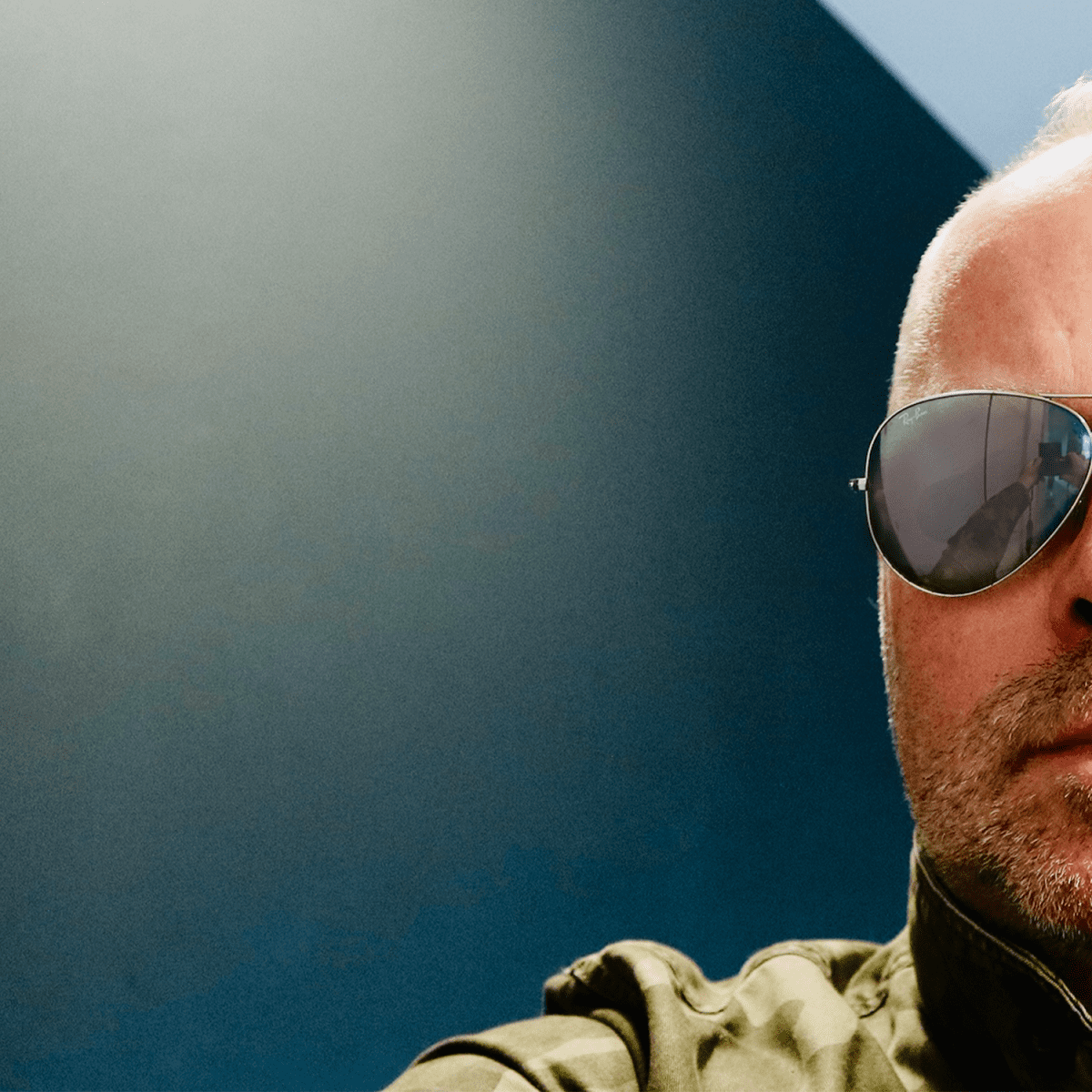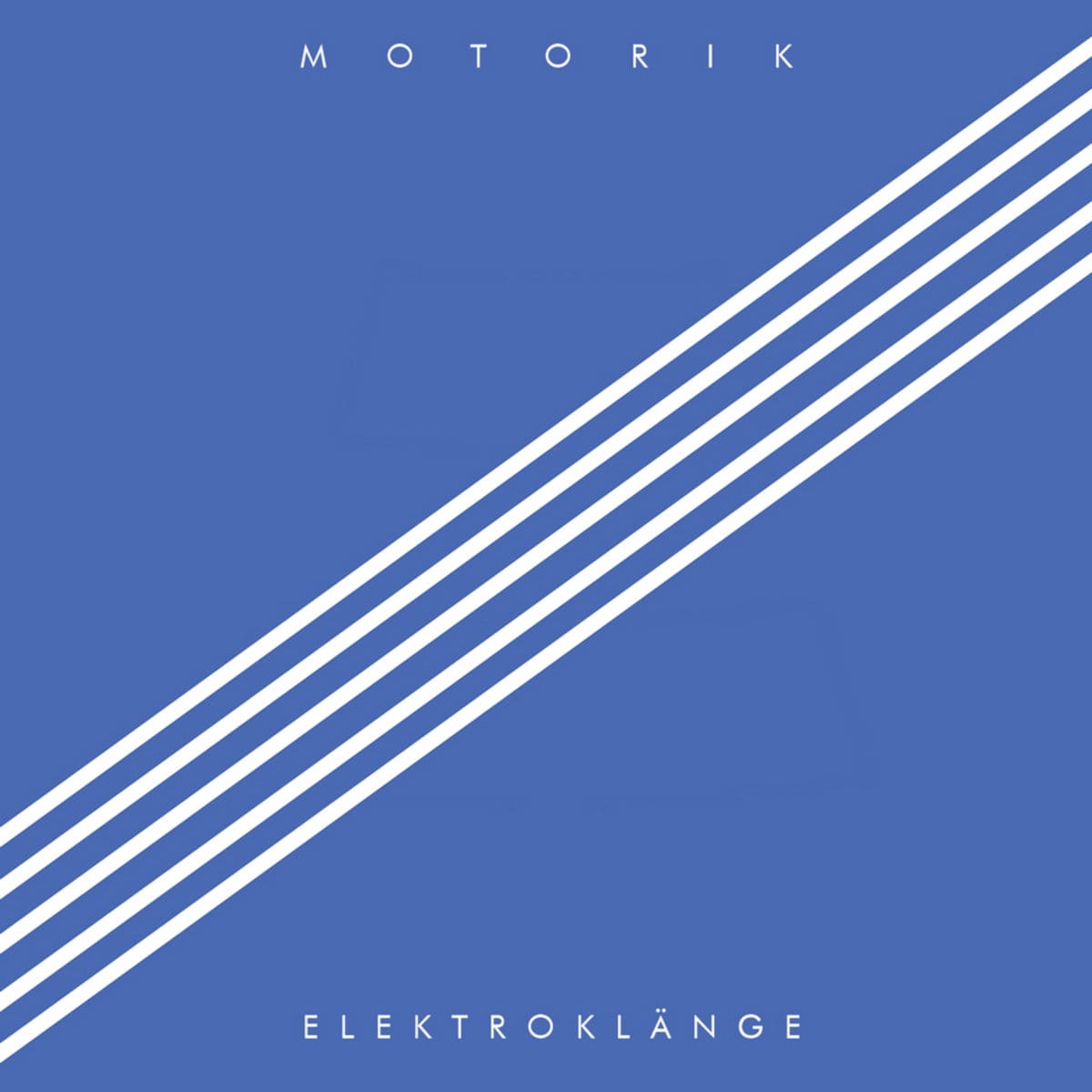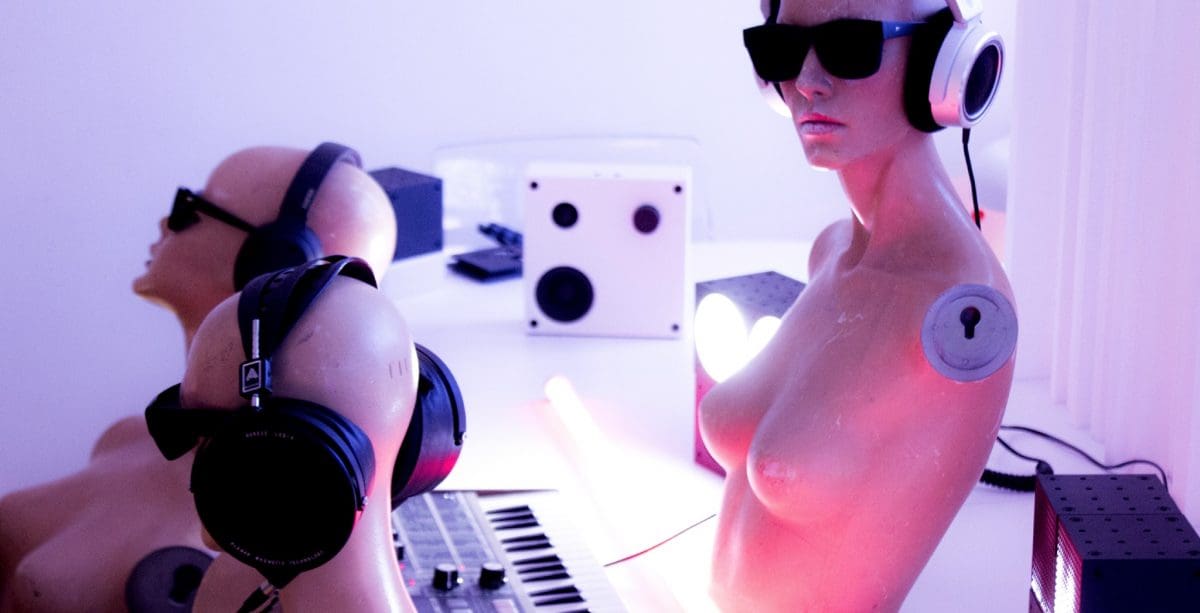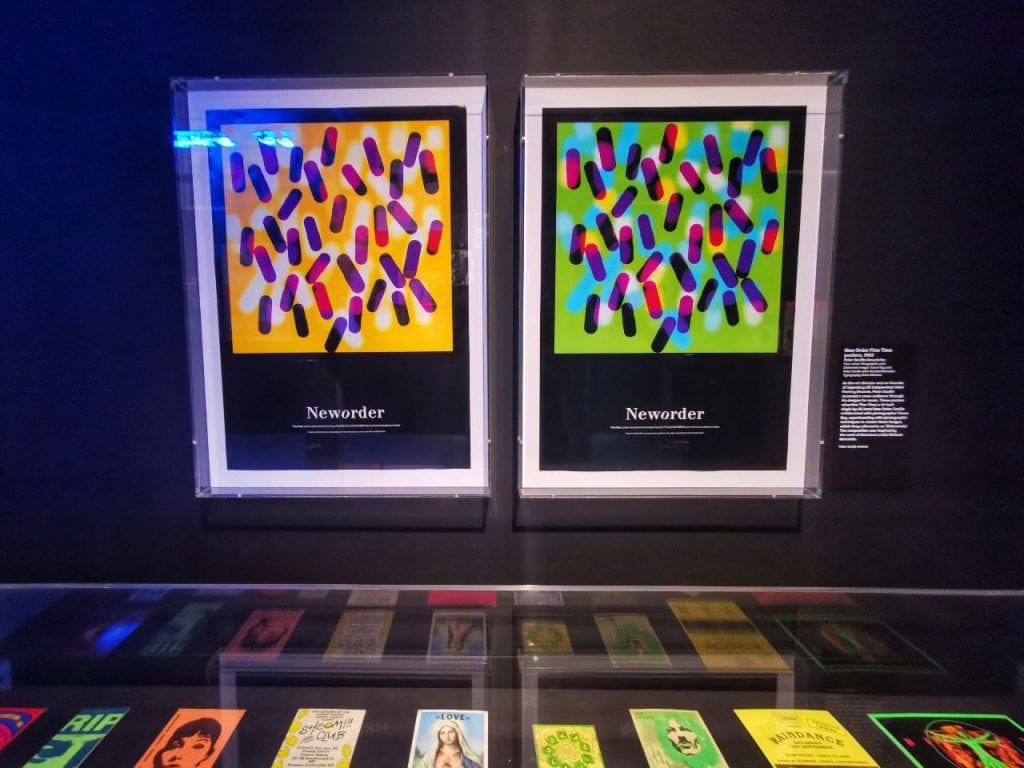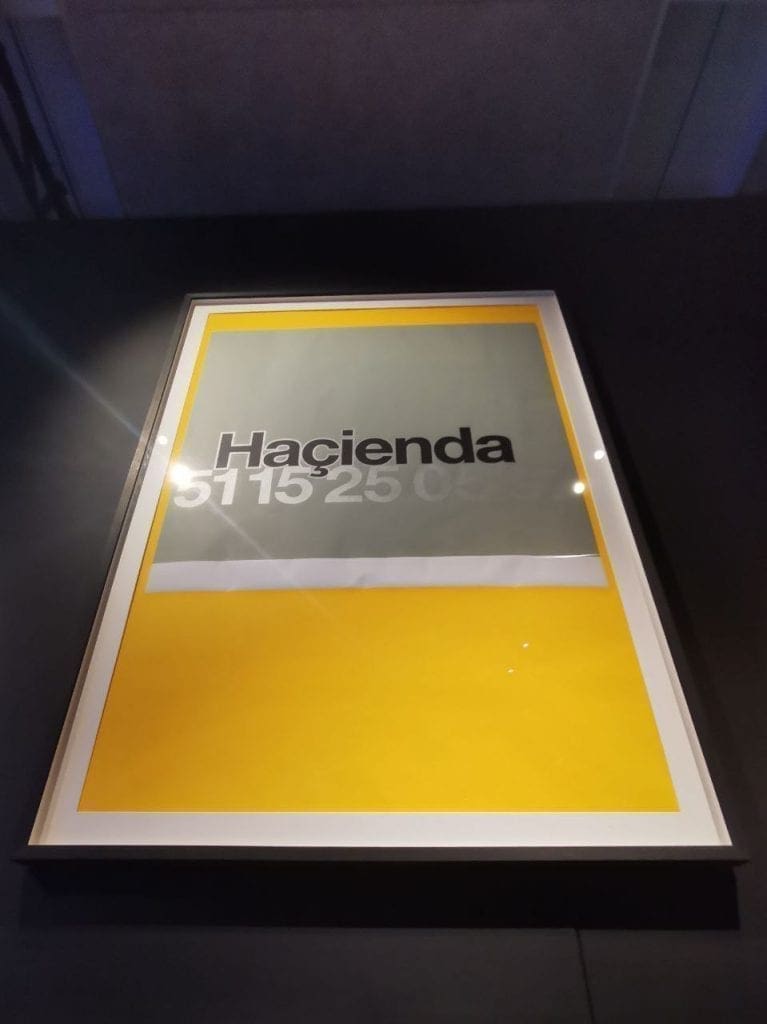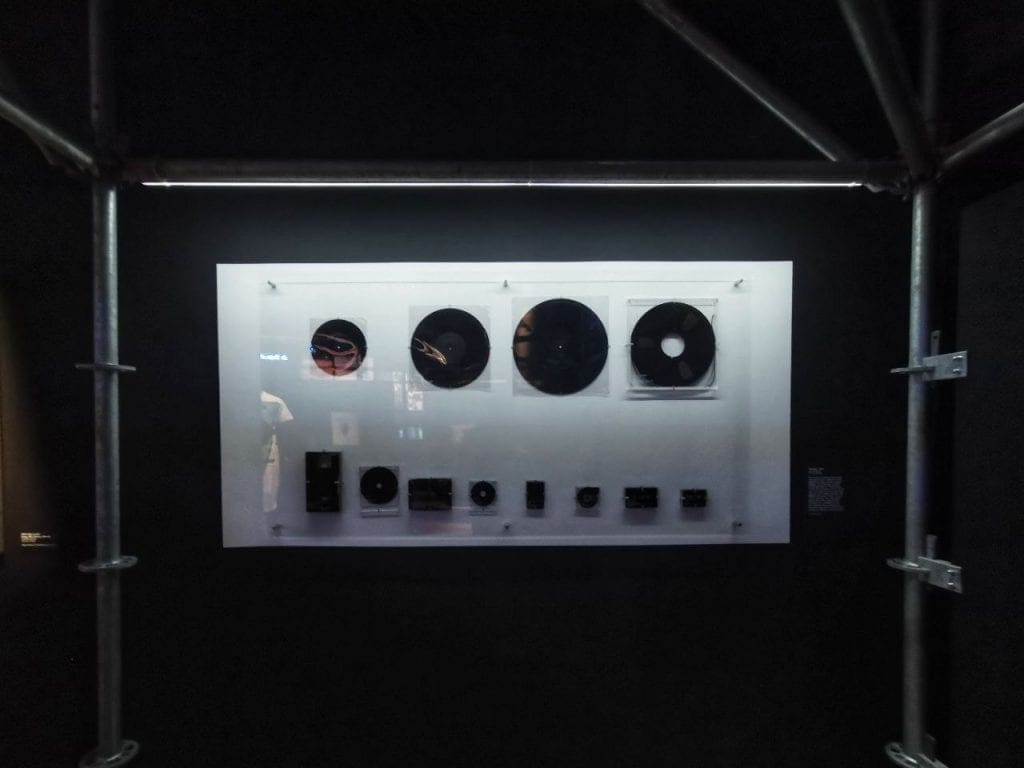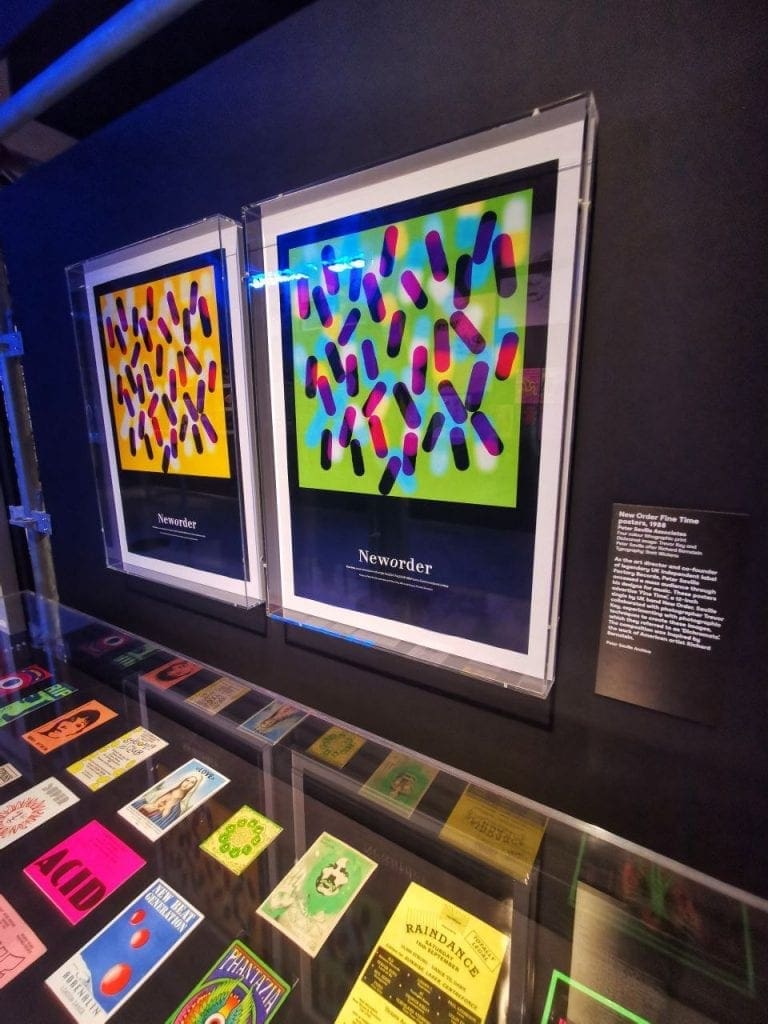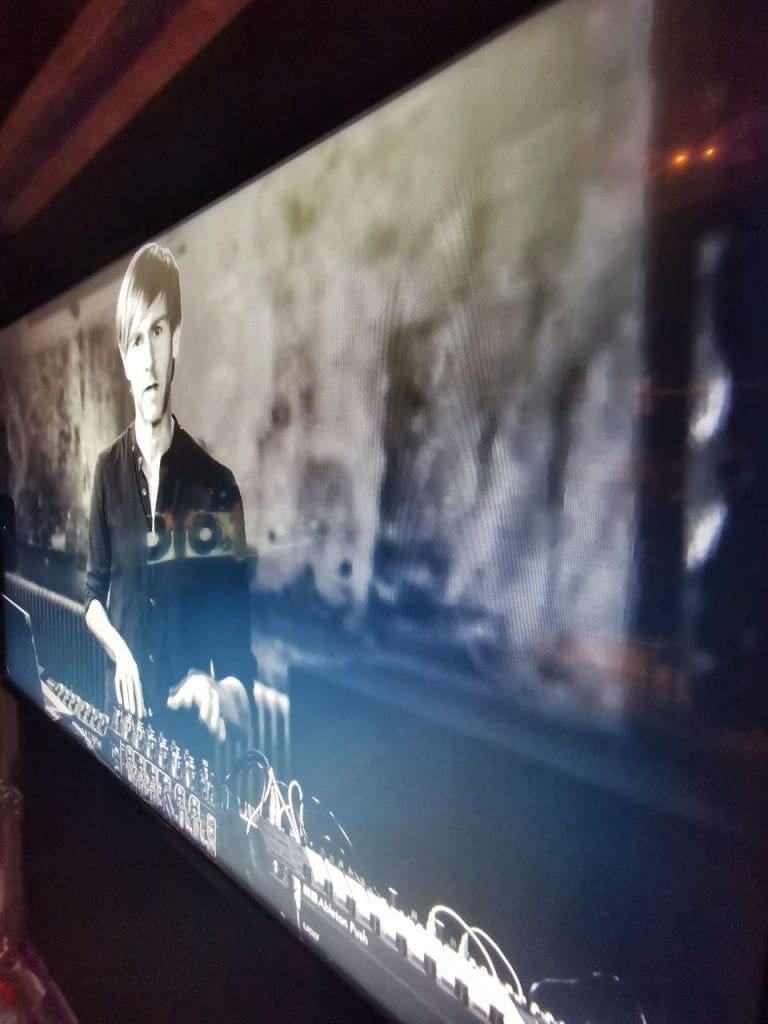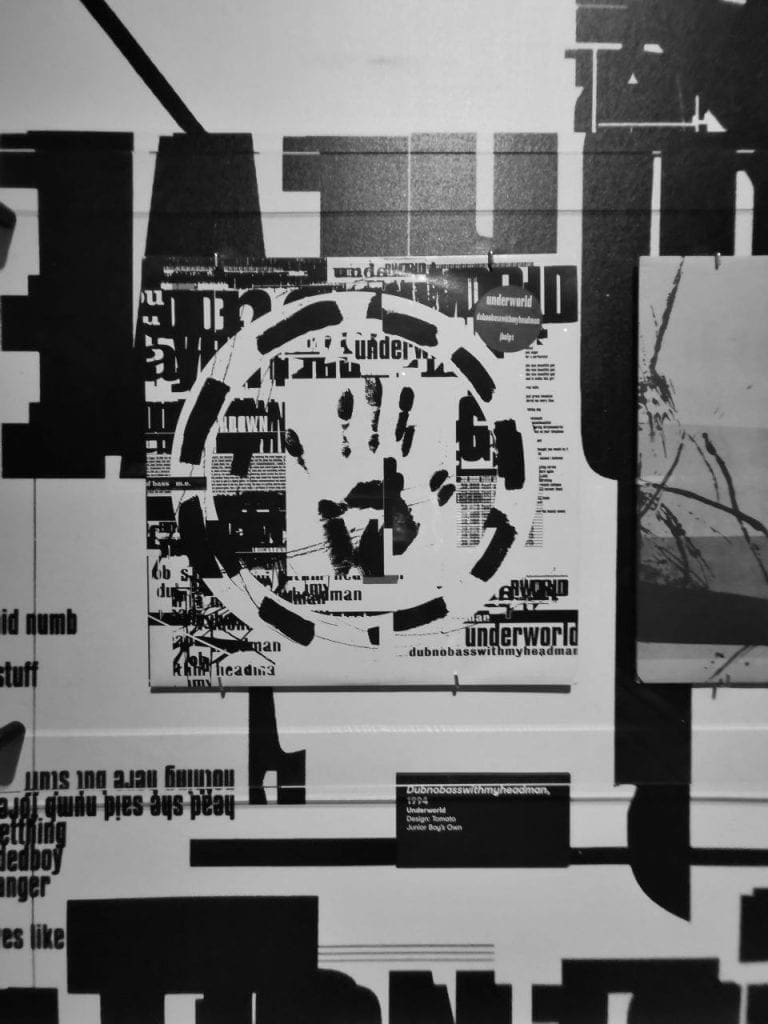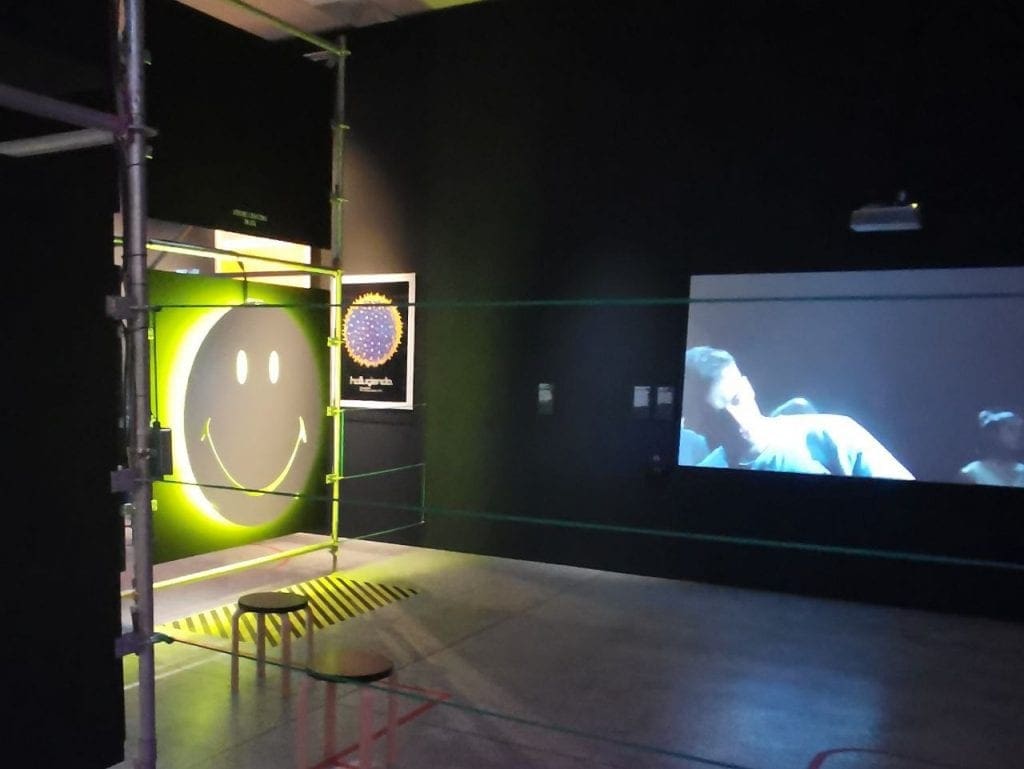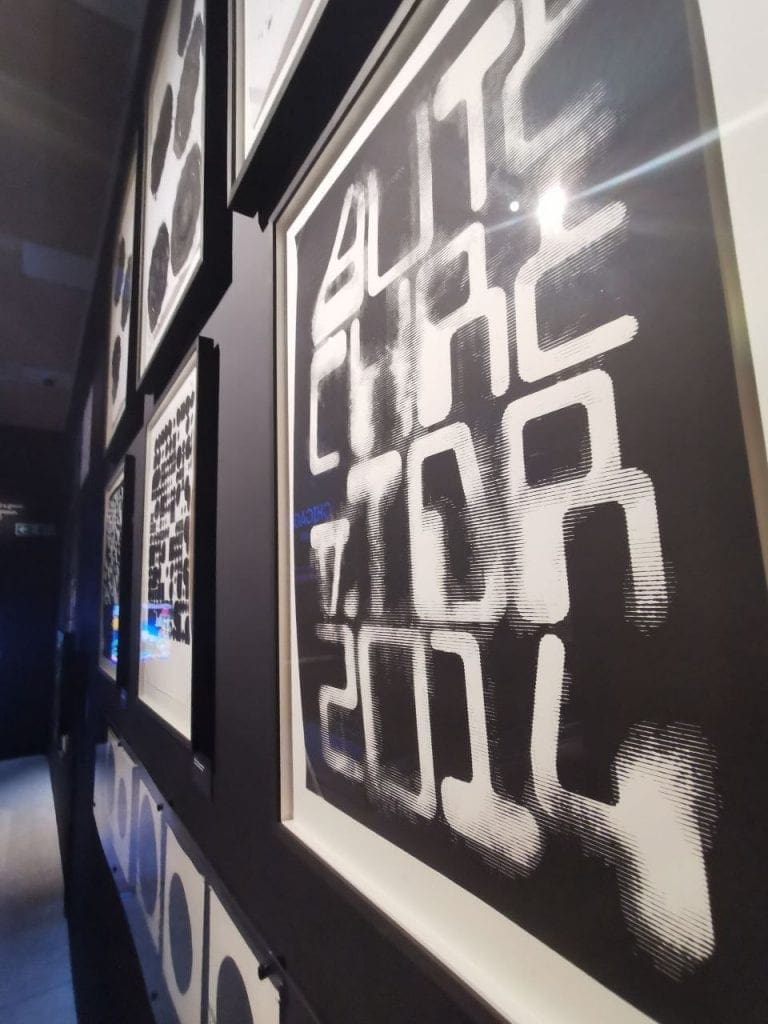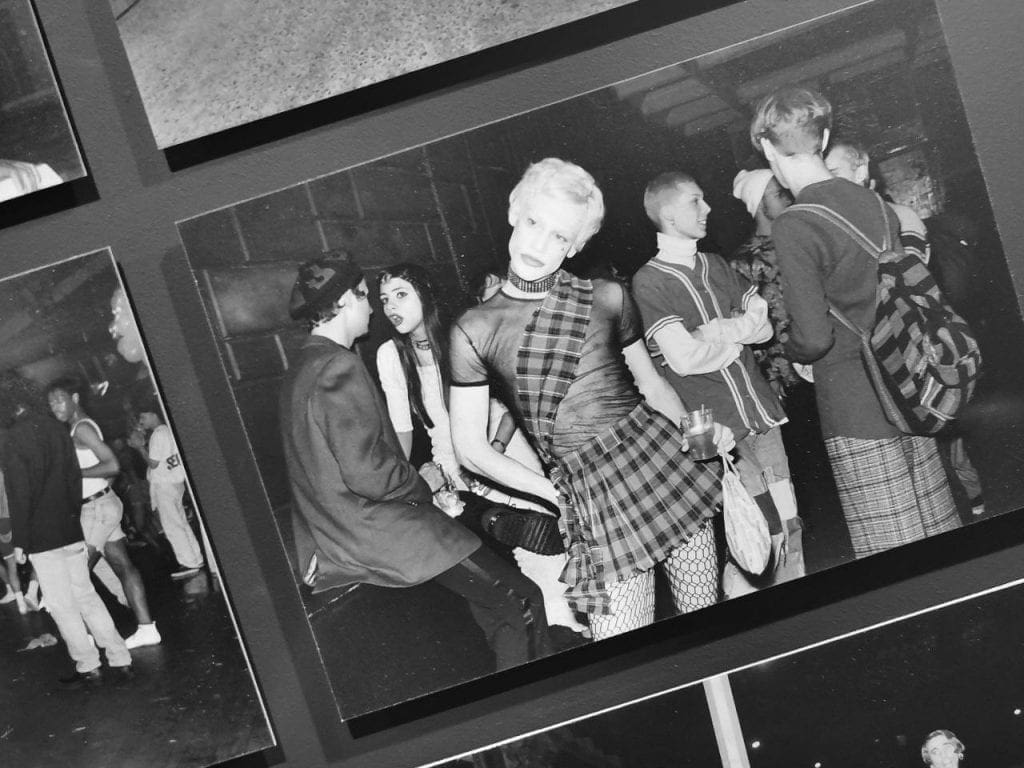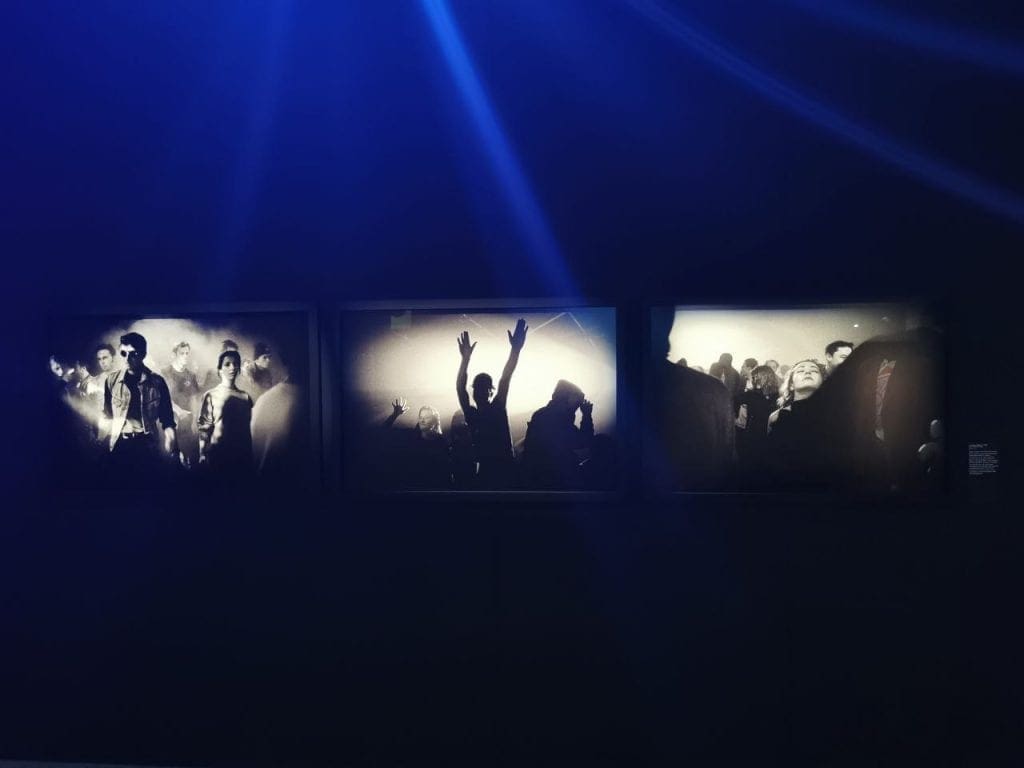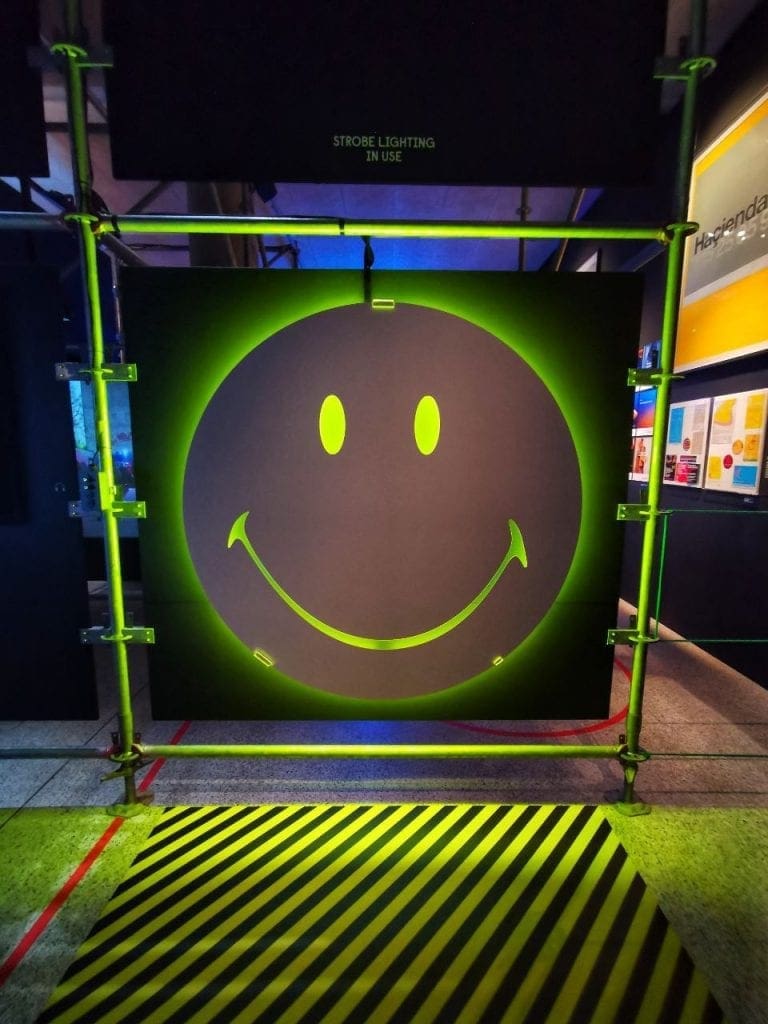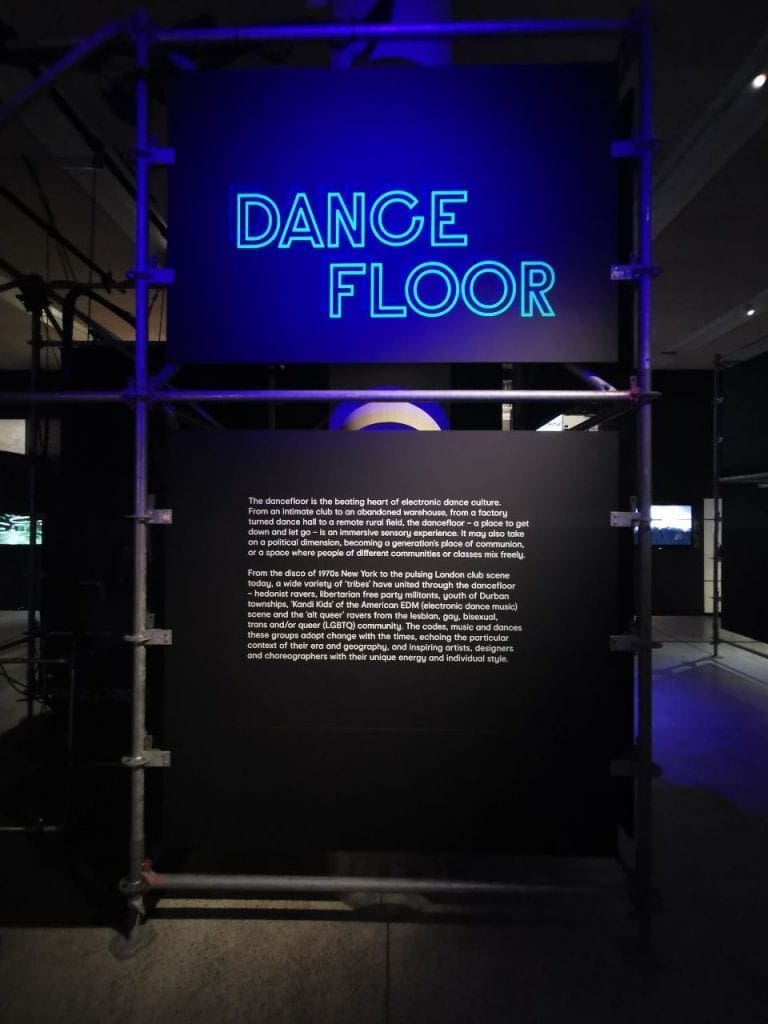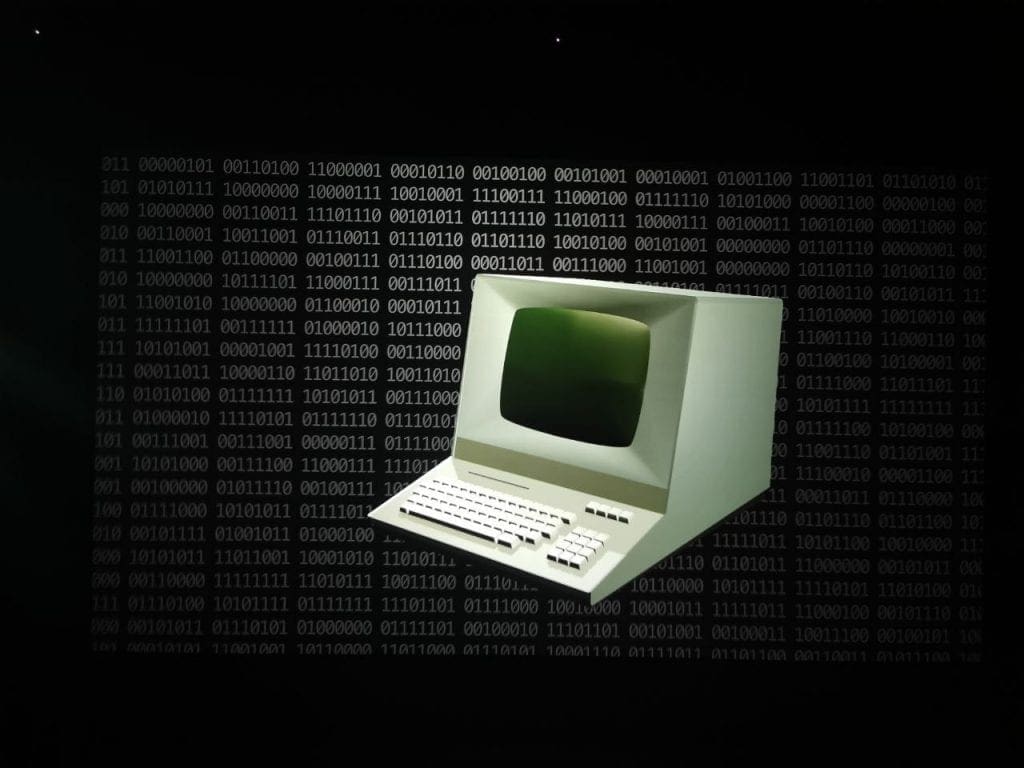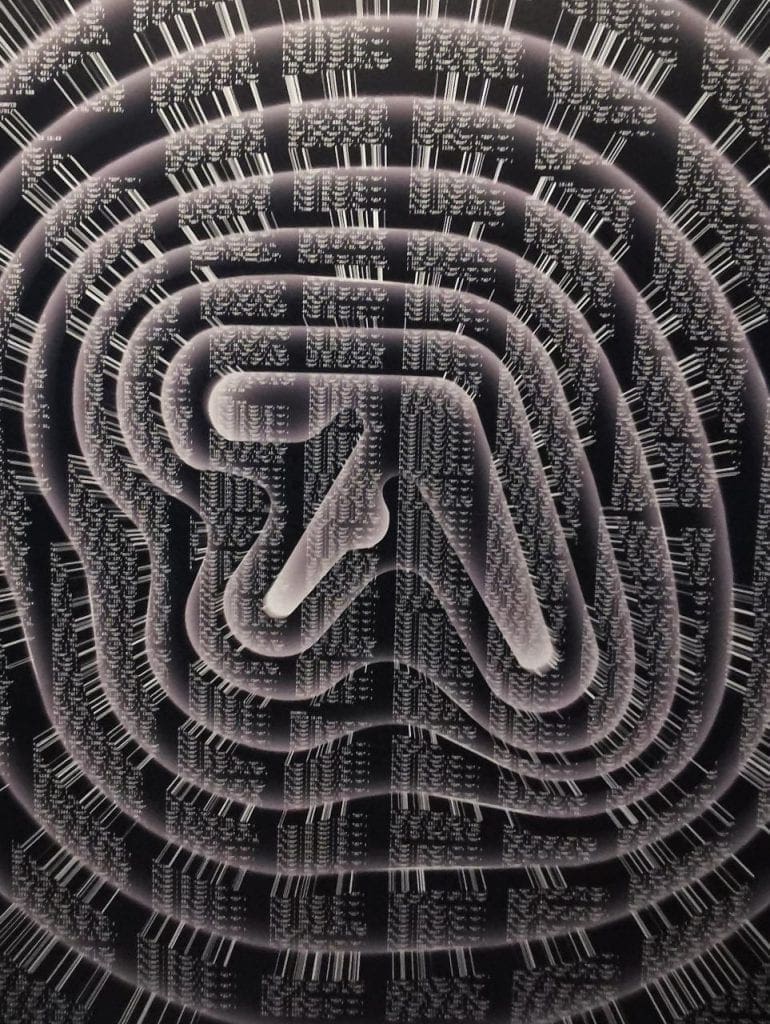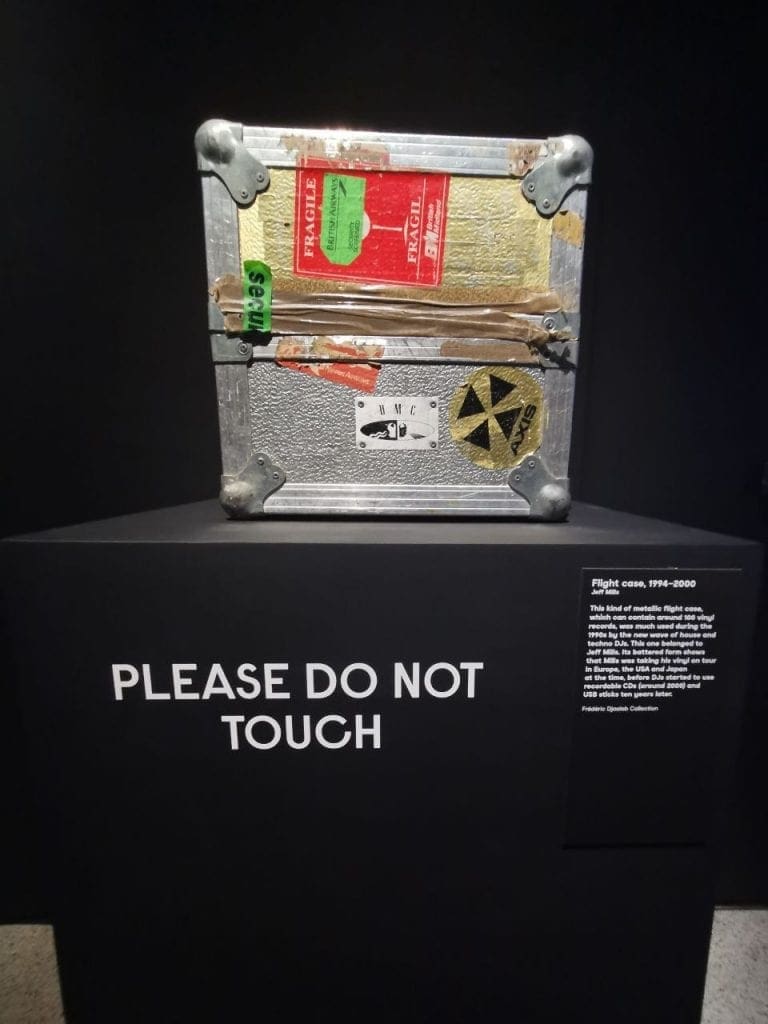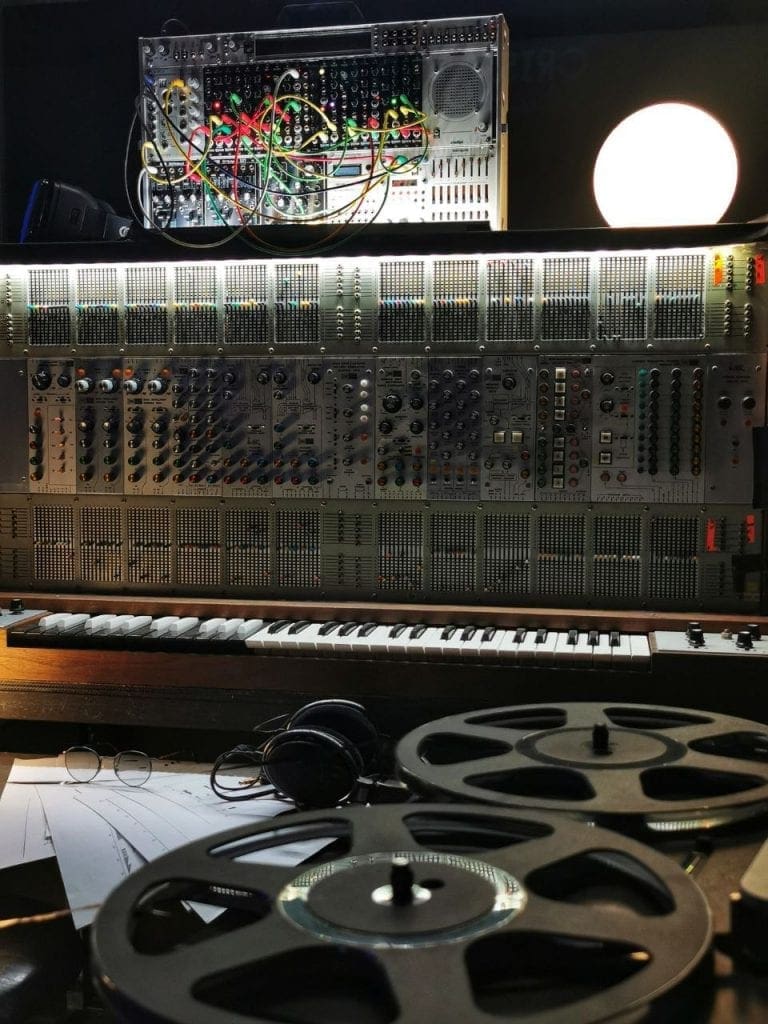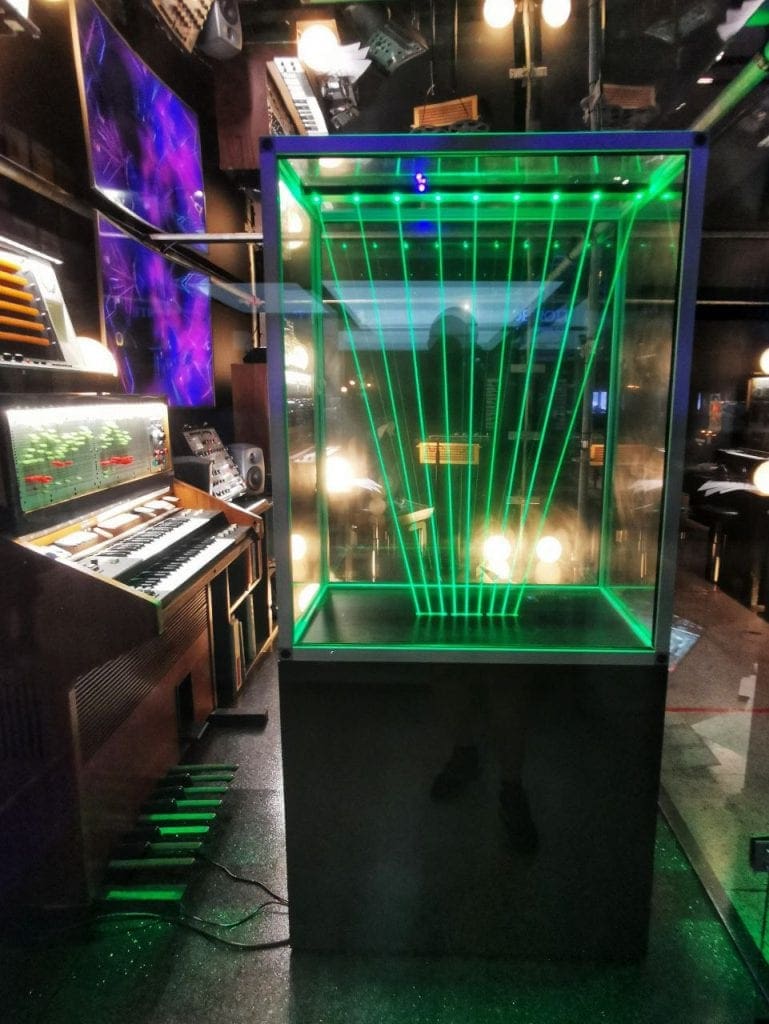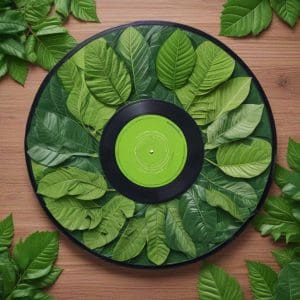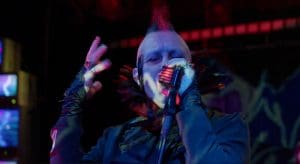A visit at ‘Electronic: from Kraftwerk to The Chemical Brothers’
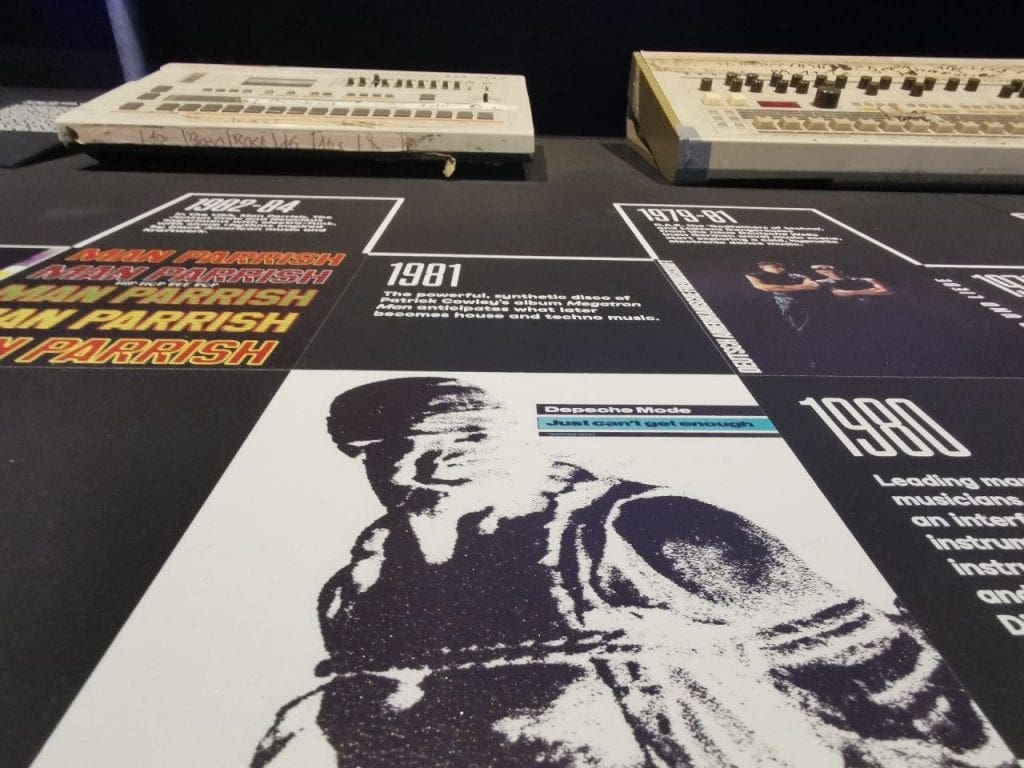

(Photo & Text by UK correspondent Simon Helm) If you are curating an exhibition on electronic music and design, how do you choose what to leave out?
You need to acknowledge the path from the theremin and experimental devices made by pioneering tinkerers to today’s digital synthesisers. You can’t drop Daphne Oram and early adopters of the Moog.
Subtitling the show, “From Kraftwerk to the Chemical Brothers,“ risks excluding essential artists working outside of those brackets.
Have some sympathy, therefore, for London’s Design Museum in their attempt to select materials for their new show, Electronic. After all, they did obtain a laser harp and build Jean-Michel Jarre’s dream studio. They also collected some awesome hardware, from the Korg MS20 to the Quadrantid Swarm. There is a lot of artwork for fans of Designers Republic and Peter Saville Associates.
The main focus of the show, however, is hinted at in the subtitle. What really lies between Kraftwerk (represented here by a 3D film) and the Chemical Brothers (who appear to have contributed an epilepsy test) is the story of Detroit techno and Chicago house.
“Say nice things about Detroit!” reads a slogan on a wall. By all means, let’s celebrate the Motor City personalities who built its influential techno scene – but for every Depeche Mode record cover there are three objects from DJ Jeff Mills. Better make that four.
First the US, then the UK
In the town where Mute Records was founded, there are only passing signs of the legacy the label’s founder, Daniel Miller, who was just as inspired by the Kling Klang sound as the Detroit/Windsor pioneers. There is part of a Synclavier – as used by Miller on many early Mute releases – in the hardware section, and there are smatterings of Mute artists included in the show; but, in Electronic, the UK’s main innovators play second fiddle to the US club scenes.
That just highlights the challenge of curating a show on electronic music. There is so much of it about, and pulling on any thread leads to another. Anyway, Mute has Kraftwerk and New Order, these days, and they feature prominently. The Chemicals presented Bernard Sumner with a lifetime achievement award a few months ago, so everything converges in the end.
The design elements have been organized to coincide with the sounds. Richie Hawtin (Plastikman) appears in a video. Underworld have a significant display of their cover art. Flyers, club membership cards, fashion and dance performances inspired by the music are carefully set out to capture the feelings of different scenes. The masks used in Aphex Twin’s “Window Licker” video are there behind glass.
There is less to look at for fans of Fad Gadget, Silicon Teens, Laurie Anderson or OMD. Stock, Aitken & Waterman, Front 242, Rational Youth, Skinny Puppy and a small army of influential disco producers could have used more attention, too. But, if the beats of underground techno are your thing, then there is Philip Topolovac’s scale model of Berghain, along with plenty of record covers and photographs, to look at. There are also dramatic light works to draw your attention and induce grand mal seizures.
Luckily there’s the gift shop
The balance is restored slightly in the gift shop. Merchandise includes books on Mute’s visual history, Kraftwerk (with Uwe Schütte’sexcellent book on prominent display), and the story of rave culture. In the vinyl record section, New Order are represented by Movement – their least club-friendly album, but also the launching pad for their turn towards dance music.
It is just a reminder that, as fascinating as many of the exhibits are at the Design Museum, the best story of electronic music is always going to be the one that is told by your own record collection.
What to expect visually?
Event details
- Electronic: from Kraftwerk to The Chemical Brothers
- Where: Design Museum, London
- When: On from 31 July 2020 to 14 February 2021 (advance booking essential)
Since you’re here …
… we have a small favour to ask. More people are reading Side-Line Magazine than ever but advertising revenues across the media are falling fast. Unlike many news organisations, we haven’t put up a paywall – we want to keep our journalism as open as we can - and we refuse to add annoying advertising. So you can see why we need to ask for your help.
Side-Line’s independent journalism takes a lot of time, money and hard work to produce. But we do it because we want to push the artists we like and who are equally fighting to survive.
If everyone who reads our reporting, who likes it, helps fund it, our future would be much more secure. For as little as 5 US$, you can support Side-Line Magazine – and it only takes a minute. Thank you.
The donations are safely powered by Paypal.

